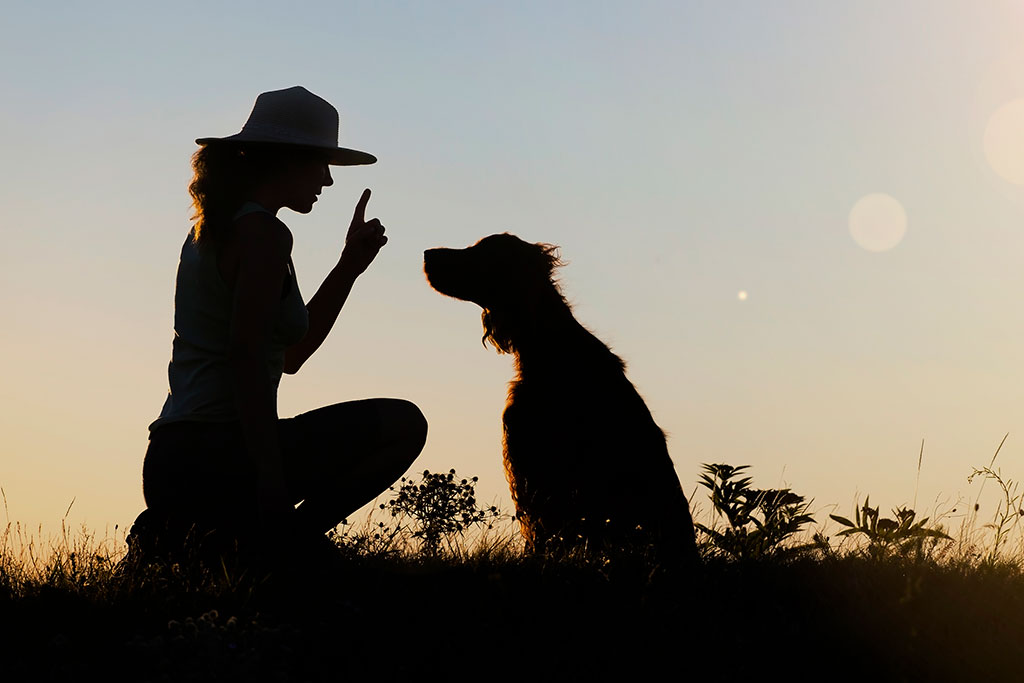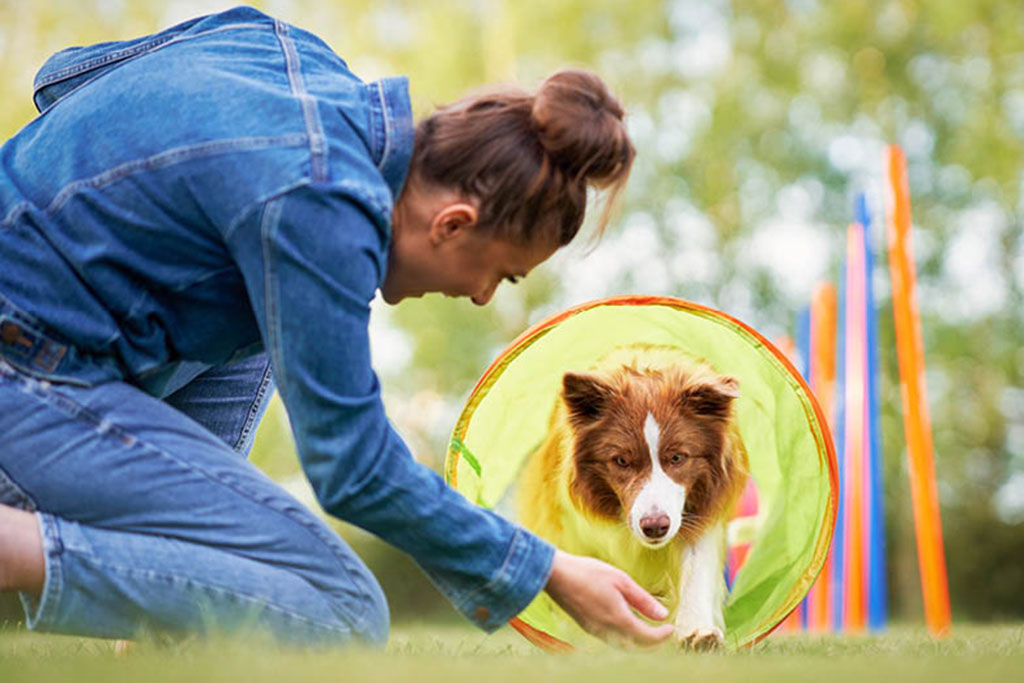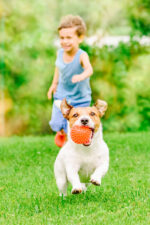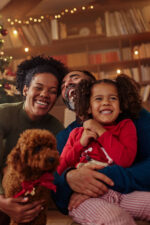Dogonality: How to Train Your Dog
Interview with Doug and Elizabeth Simpson
Doug and Elizabeth Simpson of Tenderfoot Natural Dog Training in Boulder, Colorado, aim to help people develop deeper relationships with their dogs through natural communication.
Here they share how to train yours and understand their unique personality—or “dogonality.”
How long have you been training dogs?
Elizabeth: Practically all our lives. We both had experience working with various animals, and when we got married, we immediately filled our home with them. Our methodology can be used with all sorts of animals, including cats, horses, dogs, birds, and llamas, because they all speak the same language.

What is “dogonality,” and how does it affect training?
Doug: It’s a dog’s personality—whether they’re an introvert or extrovert, tenacious or sensitive. Once you know your dog’s dogonality, you can target their training. For instance, you can focus on teaching a reactive dog impulse control or a boisterous one how to be calm and patient.
Would you describe your dog-training philosophy?
Elizabeth: It’s founded on love, trust, and respect. We focus on relationship training, which requires setting rules and boundaries like a parent does with a child. Loving your dog is easy; gaining their trust and respect requires continuously earning it for the duration of your relationship. That relationship will fall apart if you don’t build these essentials. Our Tenderfoot 3-Step drills teach our clients the leadership and relationship skills they need to create better connections with their dogs.
Doug: Don’t base training on food, painful devices, or fear. You shouldn’t do anything to your dog that causes pain; it’s not a good way to learn, and you’ll lose a lot of trust. When your dog wants to jump, bolt, or chase, they should defer to you before they react. And then, when they do what you ask, they’ll naturally be rewarded with an influx of feel-good chemicals like serotonin, dopamine, and oxytocin.
You say not to base training on food. Does that include treats?
Elizabeth: Yes. You are the treat—your warmth, loving touch, and kind tones mean the world to your dog. When animals interact, they don’t give each other treats for a job well done; that is a human construct. Instead, they have relationships that establish who’s the leader (decision-maker) and who are the followers. When you’re more present with your dog, they’ll look to you for answers.
Doug: It is OK to give them a treat now and then. But you don’t want to be a vending machine by doing so all the time. If your dog is working for food instead of for you, they might not listen if you don’t have food in your hands.

It sounds like dog owners also need training themselves:
Doug: They do—it starts with them.
Elizabeth: Dogs can’t change their behavior unless you change yours. Everything they do reflects your dog-owner relationship. For instance, if you want to teach them patience, you must have patience too.
When is it best to start training a dog?
Doug: As soon as you get them.
Elizabeth: You must establish ground rules when you welcome them into your home. Knowing what they can and can’t do will help them feel safe.
You don’t recommend adopting more than one puppy at once. Why?
Doug: Having two puppies is basically ten times the work of having one dog. It’s better to adopt one puppy and wait up to a year before getting another one. If you already have a well-trained dog before bringing home another one, your older dog can teach the younger one.
Elizabeth: Also, if you adopt two puppies at the same time, they might develop a better relationship with each other than with you, meaning they look to each other for guidance instead of you. You’d need to spend one-on-one time with each to train them.
Is there a proper way to walk a dog?
Elizabeth: Yes. Their toes should be behind yours. If their toes are in front, they’ll think they’re taking you for a walk and will be more reactive to external stimuli like squirrels.
Doug: It’s also fine to have them walk to your left or right or follow behind.
What’s your advice for treating a dog’s separation anxiety?
Elizabeth: If your dog is upset about you being away, you may have contributed to that reaction by not teaching them how to be alone or by making it a big deal when you leave the house. However, they can get used to being home without you. Our rescue dog loves me, but because of his training, he barely lifts his head when I come home. The goal is to raise a secure dog, not one who clings to you like a security blanket.
Doug: To help combat separation anxiety, we teach our clients the “Brad Pitt Drill.” It works like this: If you’re in a room and Brad Pitt walks in, you’ll drop everything and pay attention to him. But if he walks in and out repeatedly, you may be less interested in him after a while. Do the same thing with your dog—step outside, wait ten seconds, and then come back in without acknowledging them. Do this a few times more, lengthening how long you’re away each time. Eventually, you can come and go without upsetting them.
What’s your best training secret?
Elizabeth: We teach people how to read their dog. Eye contact, breathing, stance, the ears, the mouth, the tail, focus, energy, intention—it all matters.
Doug: When you understand your dog’s body language, you can predict their actions and will know, for example, that they’re going to jump before they do.
For more info, follow them on Instagram @tenderfoot_training or visit tenderfoottraining.com or facebook.com/tenderfoottraining


















